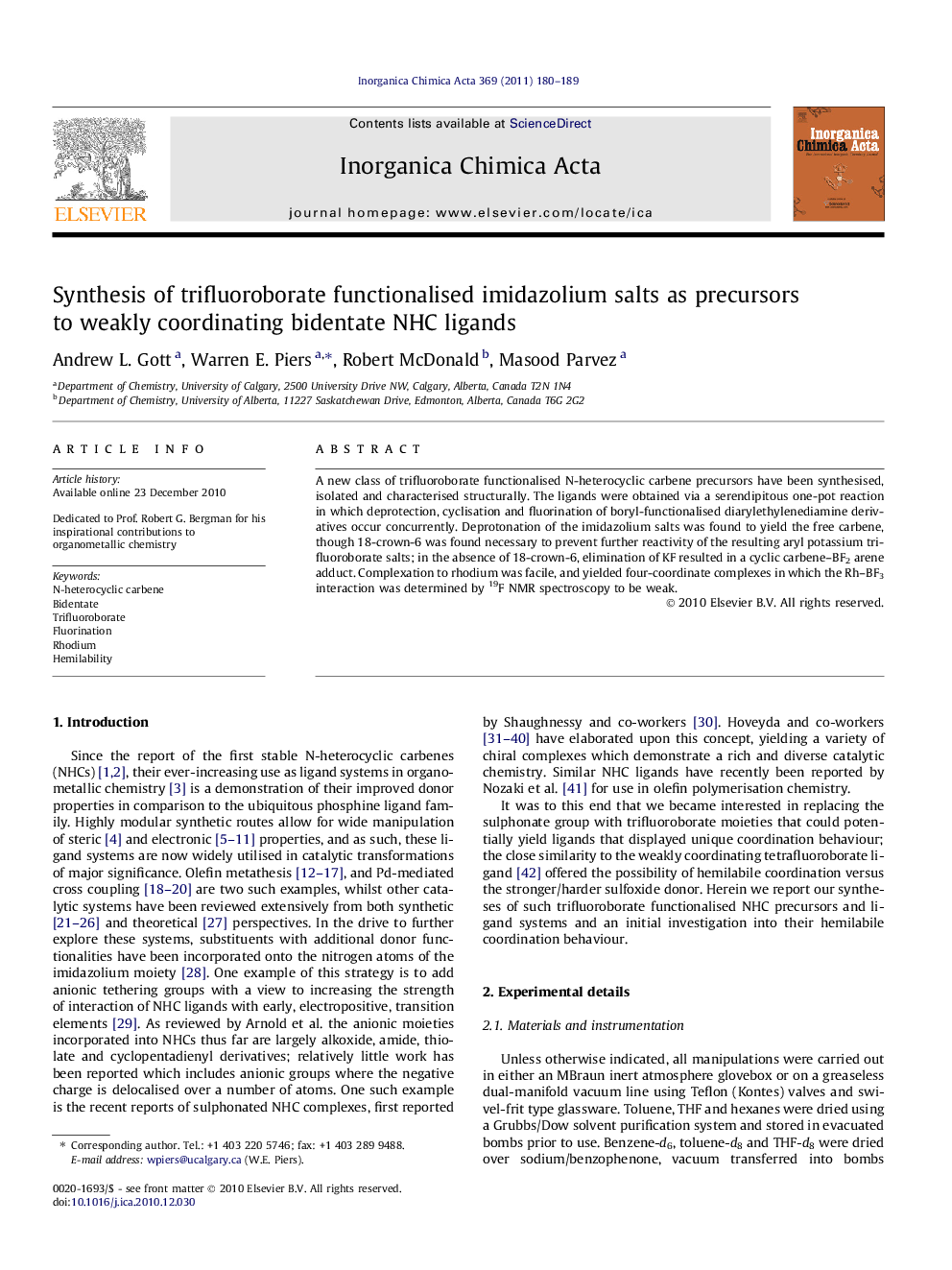| Article ID | Journal | Published Year | Pages | File Type |
|---|---|---|---|---|
| 1307677 | Inorganica Chimica Acta | 2011 | 10 Pages |
A new class of trifluoroborate functionalised N-heterocyclic carbene precursors have been synthesised, isolated and characterised structurally. The ligands were obtained via a serendipitous one-pot reaction in which deprotection, cyclisation and fluorination of boryl-functionalised diarylethylenediamine derivatives occur concurrently. Deprotonation of the imidazolium salts was found to yield the free carbene, though 18-crown-6 was found necessary to prevent further reactivity of the resulting aryl potassium trifluoroborate salts; in the absence of 18-crown-6, elimination of KF resulted in a cyclic carbene–BF2 arene adduct. Complexation to rhodium was facile, and yielded four-coordinate complexes in which the Rh–BF3 interaction was determined by 19F NMR spectroscopy to be weak.
Graphical abstractTrifluoroborate functionalised N-heterocyclic carbene ligands were synthesised by a one pot, three step synthesis. The coordination behaviour of the trifluoroborate moiety to a rhodium centre was revealed to be weak by 19F NMR spectroscopy.Figure optionsDownload full-size imageDownload as PowerPoint slideResearch highlights► Trifluoroborate functionalised N-heterocyclic carbenes were synthesised. ► The synthesis was aided by an unforeseen one-pot, three step reaction. ► Coordination to rhodium was facile via the carbene. ► The binding of the trifluoroborate moiety to Rh was weak, as determined by 19F NMR.
